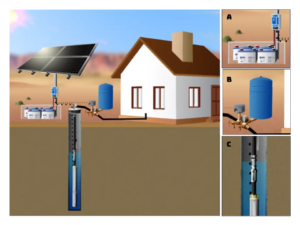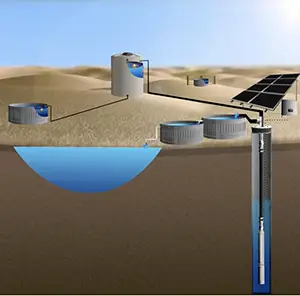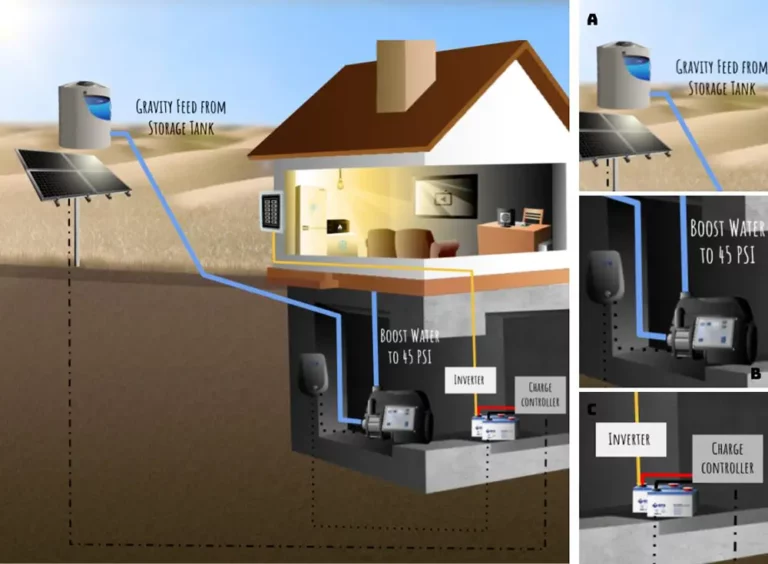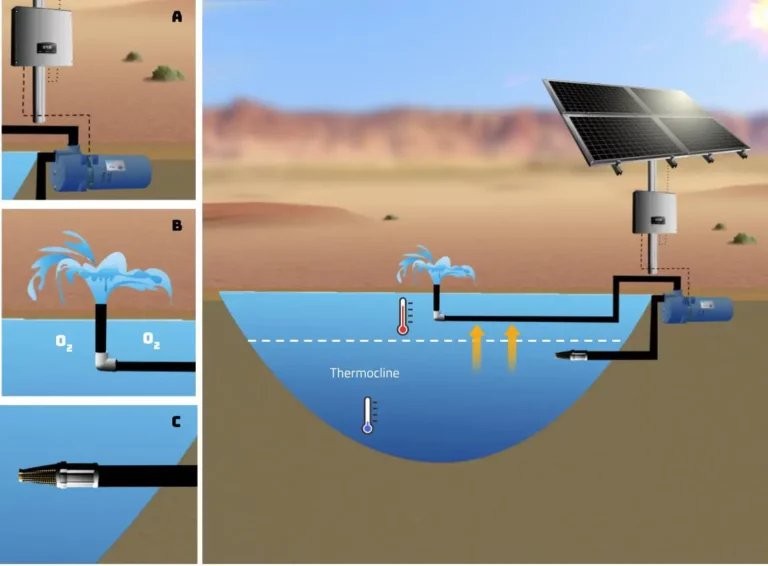Solar Well Pump with Batteries to Pressure Tank

Submersible pumps can’t provide 45 -60 psi for a household by themselves, they require the help of a pressure tank for reliable, consistent high pressure. An RPS 200, 400, 600, 800 or 400N could be used in this setup as they are all compatible with batteries (A), which you’ll need for off hour or nighttime pumping. Without batteries, the submersible pump would only operate from sun up to sun down. After sun down you would only have what’s available in the pressure tank, which some rare customers opt for because their water needs are extremely minimal. We recommend splurging on a larger capacity pressure tank rather than smaller for off grid set up, it provides some extra storage and minimizes pump cycling. Two pieces of special plumbing are needed to make a submersible pump to pressure tank system work; a check valve and a reverse action pressure switch. The check valve (C), a one way valve that stops water from draining back through the pump, helps maintain pressure in the pipeline. The reverse action pressure switch (D) senses changes in pipeline pressure, if the pressure tank is draining and therefore asking for more water, or filled up. The reverse action pressure switch is wired into the charge controller and will send a sensor pulse to either turn on the pump (if the pressure tank is asking for water) or turn the pump off (if the pressure tank is full). Reverse action pressure switches are adjustable to a variety of settings like 40/60 , 30/50 or 20/40, we sell them here. Watch our video about adjusting a reverse action pressure switch here. If the water were allowed to drain back through the pump (which is sometimes useful in freeze proofing a system) then the reverse action pressure switch would be unable to sense the changes in line pressure. And if you’re worried about the pump turning on/off multiple times during the day – don’t be! Our submersible pumps are all soft start/ slow stop, meaning no grinding parts or start up torque.
Choosing a Pressure Tank
Our engineers recommend purchasing the largest pressure tank that you can afford. We encourage tanks rated for at least 100 gallons, but for completely off grid properties consider 200 gallons. A larger tank reduces pump cycling ( how often your pump turns on and off) and allows you to store *some* pressurized water just in case your batteries lose charge. Pressure tanks ask the pump to turn on once about half of the tank is empty. For example, a 100 gallon pressure tank will start refilling after 50 gallons has been used. Typical household water use is estimated at 50-100 gallons per person per day.
In unique situations where there is only one person in the household and they have very low daily water needs, we’ve paired an RPS solar pump with a large pressure tank and no batteries. There’s more than enough water in a 200 gallon pressure tank for one person throughout a 24 hour period and the resident can add batteries down the road if they want to invest at a later date, or more people end up living in the house.



